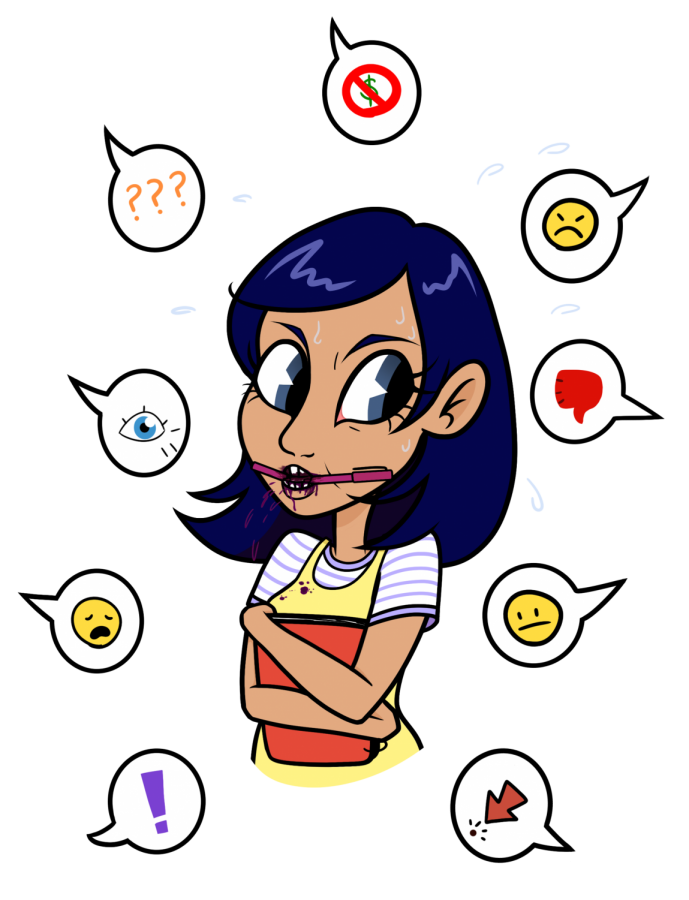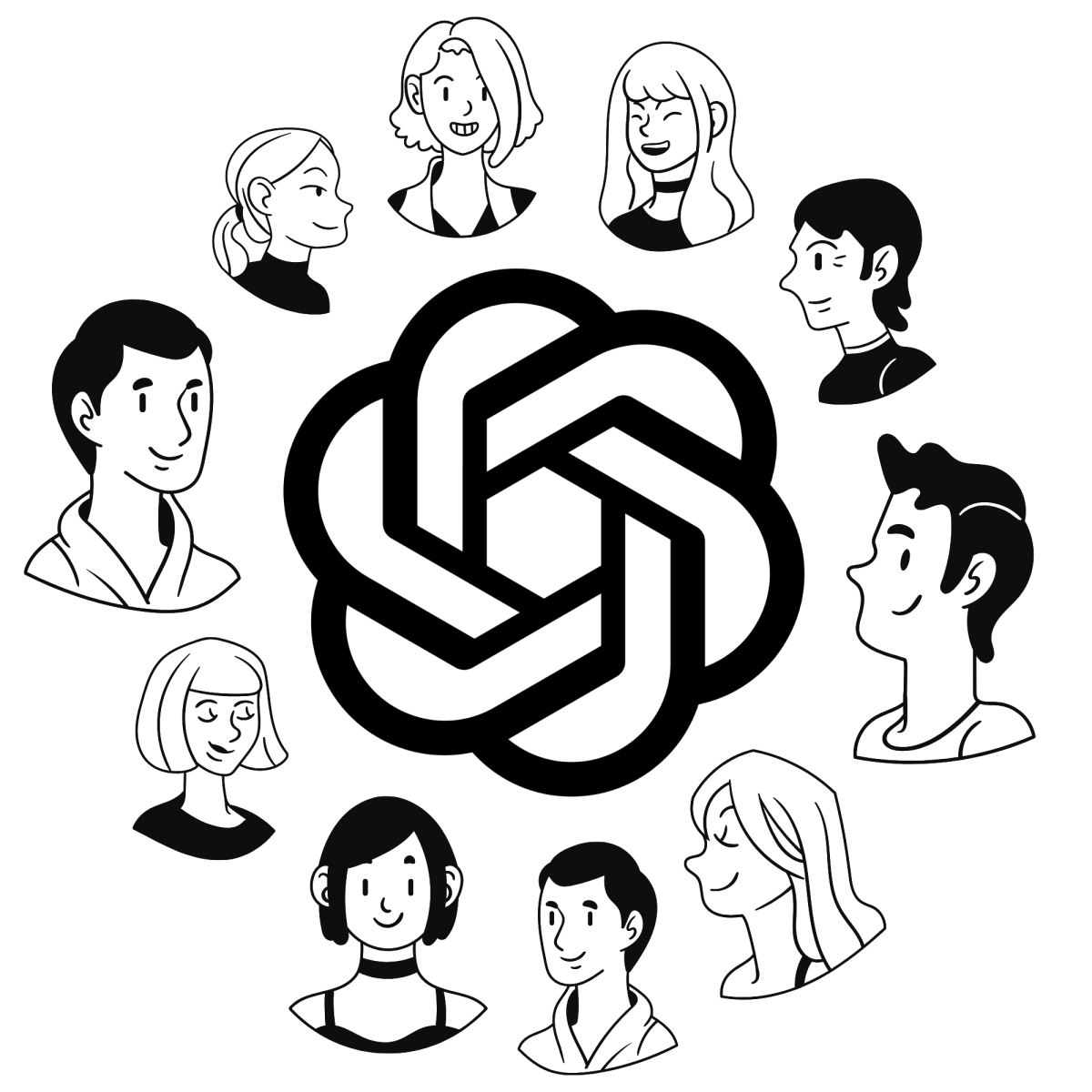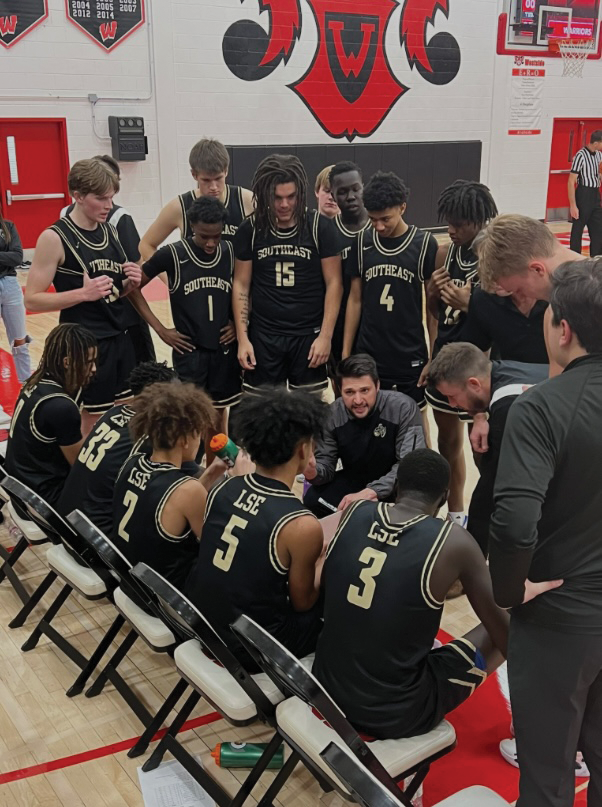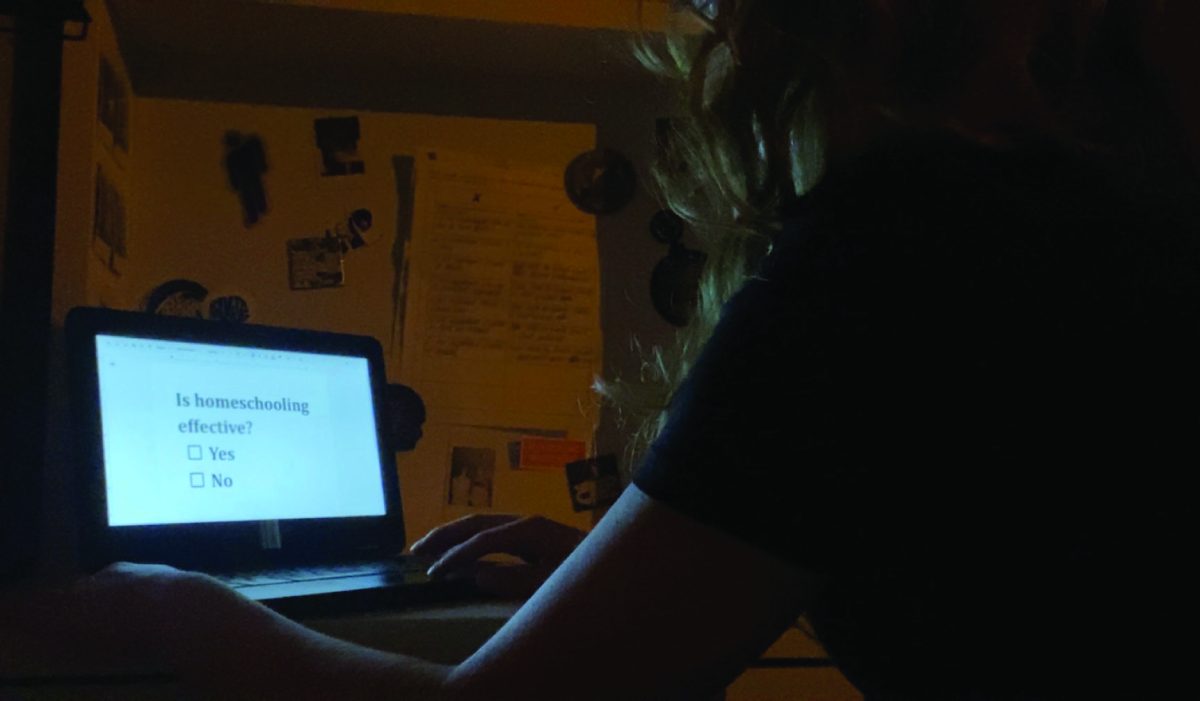The art of annoyance: The top 5 pet peeves of artists
March 4, 2020
Artists have all kinds of pet peeves. Expensive art supplies, paper tears, coloring out of the line, ink smears and many other problems arise ever so inconveniently when creating artwork. However, perhaps the most distressing issue artists face is not with their materials, but with other people. Artists, especially those who are very talented in their work, are often subjected to annoyances and unnecessary rudeness over rejecting requests, dealing with clients for art commissions or having others criticize or point out certain details in their artwork. Most people have no idea what they go through as drawers, painters or digital artists. If one were to ever find themselves mesmerized by someone else’s artwork and thinking too much of themselves, it would be wise to see what problems artists face and see how it’s affected some students at Lincoln Southeast High School.
- Demands of free art and bad clients — These are very common issues artists face. A person who notices an artist’s skills may ask for them to draw something for them for free. Although some may be polite about it and won’t ask again if rejected, others may react negatively to being told “no.” They may continue pestering for a portrait of themselves or their favorite celebrity without any intention to pay the artist. They may even be offended when they’re told that they only draw for money, and will angrily accuse them of being greedy or scamming them, then adding that their art isn’t even good anyways. This sort of problem is perhaps the most hated on by artists as selling artwork is sometimes their only way of making a living or for students, helps them independently pay everyday expenses. Artists may be willing to create custom artwork for money, which are known as commissions, but then again, people may see that as being selfish and will bash them for not getting free art. On the subject of art commissions, if an artist does create artwork for a person, they may learn how impatient or rude their client can be. While it may be understandable if the artist is taking a very long time or the finished product came out not so well, it would be out of line to ask every single day when it will be finished or harshly criticizing the artwork over small details. Artists who are going through personal issues or who become too busy with other things may let their client know or offer a refund if they’re unable to finish a commission. However, there are artists who do indeed scam, so people should be cautious of who they buy custom art from, but those who ever consider commissioning an artist should double-check who they are and take a look at their artwork, as well as see how their commission process works. Nevertheless, people must realize that artists have lives of their own where they may have other duties to do and where they also must pay for things, just like everyone else.
- People questioning or making rude comments about the art — Whether they’re a beginner or experienced, draw anime or realism, artists may often receive comments that could be well-meaning, yet obnoxious or genuinely mean. People will sometimes see someone drawing out a rough sketch of a person, and ask questions such as, “Are they naked?” “Why are they bald?” “Where is the (body part)?” These questions may seem innocent enough and aren’t necessarily bad, but they can be very annoying to hear, especially by multiple people. However, they can be offensive if it’s just an artist’s natural style and someone pesters them about the what, where and why of something involving their art. Then again, there are some who point out one’s artwork and will insult it, sometimes right in front of the artist. Jacob Paukune (11) knows what it’s like to be put down for art. Paukune, who enjoys working with clay as well as just paper and pencil, has had his work put down. “They said it wasn’t a very good piece,” Paukune said when talking about how his work had been stolen and destroyed. In middle school, Paukune created dog tags in honor of his grandmother who had passed away. “[She] served in the military for a little bit. She was a medic. I found her dog tags and then made copies of them, and just carved a picture of a ladybug because that was her favorite animal.” The dog tags, he explained, came from the heart, and it was very upsetting when they got stolen, as well as insulted. “It kind of ticked me off,” Paukune said. He felt like he “was about to blow up, and I ended up verbally yelling at them and it didn’t turn out well.” To have one’s work be taken, as well insulted, can be quite low, but when their work is constantly criticized it can be annoying. Hannah Romell (12), who is a painter, has also had her work be given unnecessary comments. “There are obviously things wrong with every painting I do, and areas that I could improve each of those, but an incessant stream of suggestions from people who don’t even know what I’m trying to achieve isn’t helpful, it just makes me doubt myself and my ideas,” Romell said. Though constructive criticism can be useful to many, when it isn’t asked for, or the “critiques” are actual insults, it can just seem rude and overly perfectionist.
- People making self-deprecating comments when complimenting — Another common issue that artists face is being complimented by someone on their artwork, then that same person tells them how they’re bad at creating anything. People may say things such as, “Your art is so good!” or any other compliment, for it then to be followed by, “I can’t make anything.” “I wish I had your skills.” “I can only draw a stick figure.” or another similar self-deprecation. Such statements may seem harmless and innocent enough, perhaps honest in the complimenter’s mind, but from an artist’s perspective, it makes things awkward for them, as they don’t always know how to respond. It can also seem as though the person is seeking some sort of attention. Romell often gets compliments on her artwork, whether it be classmates or people in the hallway who see her with her paintings. However, Romell also hears self-deprecations. “Most of the comments I get are people saying, ‘Oh I could never do that, I’m so bad at art,’ or people comparing their art to mine and talking about how much worse their’s is,” Romell said. The reason such comments bother Romell is because she has “to spend my time telling them that they’re exaggerating and their stuff is good, when I could be working on my paintings or working on classwork. It also feels like they just came up to compliment me specifically so that they could insult themselves. Sometimes it makes me feel bad because I feel like it’s my fault that the person is comparing their art to mine, when that’s the last thing that I want.” When comparing oneself’s art abilities to another, it can definitely create some uneasiness and feel slightly like a guilt trip towards the artist. In response, Romell will say something nice back. “I’ll tell them that their’s is also really good and I’ll compliment something specific, or if they said they could never do art, I just tell them that anyone can do it if you just practice, and some people are good at different kinds of art,” Romell said.
- People looking through artwork without permission — For artists with sketchbooks, some may feel wary of leaving it out on their desks as sometimes people will become curious and look through the artwork without consent of the artist. Even if this person finds the sketchbook art well-done, the artist may not feel comfortable with having their personal item looked through, especially if the person is a stranger. Artists who draw certain themes such as horror or political may also be very cautious of who views their art and may not wish to have just anyone look through their sketchbook, otherwise they may find themselves suddenly looked down upon or seen more differently than before as a person. Not only can it be embarrassing to have others view one’s work without permission, but it can be an invasion of privacy, according to Katelyn Hurtz (11). “I can get very irritated when people pry in things that are meant to be private,” Hurtz said. “It’s sort of like stealing someone’s phone and reading [their direct messages], it can be disrespectful and a biting invasion of privacy.” Although showcasing art or letting others see one’s artwork can be a way of displaying their skills, it is still their work so it’s up to them whether or not to show their art. “Though I do believe that art is in many cases, meant to be shared, it can also be a very personal and private thing. Writing one’s emotions, painting your frustrations or punching a lump of clay until it vaguely resembles something can be a great way to cope, however, it may not be something you want to share with others,” Hurtz said.
- Being asked to draw for someone else’s assignment — When an assignment that involves drawing comes up, some students may seek out the “help” from the most artistic student in class. While these students may not mind giving advice or drawing a simple part, it can be annoying if a person, if not several, wants them to draw their entire assignment. Not only can this be too much, but if the teacher encourages originality and wants everyone to do their own work, then having someone else do it for another person may just be like cheating and destroys the point of originality. Though Allison Kelly (11) hasn’t had this issue since middle school, she is familiar with having to draw for other students, but was not always asked to do so. “I’m usually the one to offer to draw for the team,” Kelly said. “If I were to let someone else do it, knowing I might have more experience in the art area, I would feel useless.” Kelly said that while she enjoys doing all of the work, she doesn’t feel all that appreciated for her contributions. “When someone asks me to do work for them or the group, I honestly feel unappreciated,” Kelly said. “They don’t take into the fact that what I can do is thanks to years of hard work and criticism. When they ask me [to] do all the work, I feel like they are stealing from me. People will compliment on the hard work the ‘group’ did, when I was the one putting in all the effort.” Kelly, among other artists, are not the only ones who feels this way. Even those who don’t draw for other assignments often face having to do the majority of work whether it be for math, English, science or social studies classes, which many students can relate to. However, if students can empathize with that issue on those subjects, then they should be able to empathize with artists who do most of the work for another.
The issues that artists face aren’t always caused by other people, but sometimes even their fellow artists can be the source of pet peeves. Art elitism, or the belief of a certain kind of art being considered actual art over a “lower” kind, can be a problem for artists. Art elitism can be held by anyone who’s artistic, including students, art critics and even art teachers. An example would be an artist who specializes in drawing digital art but is looked down upon by other artists who only consider traditional art, such as painting or any other physical kind of drawing, actual art. The arts are a bit unpopular among most people, which may also explain why they may not be able to relate to or understand the problems of artists, many of which were not mentioned. However, for those who ever stumble upon anything art-related, whether it be a talented artist, a sketchbook or a very enticing piece of art, they ought to think before they speak or act, and realize that artists have emotions and thoughts of their own just like everyone else, so that they can continue doing what they enjoy doing best: art.










